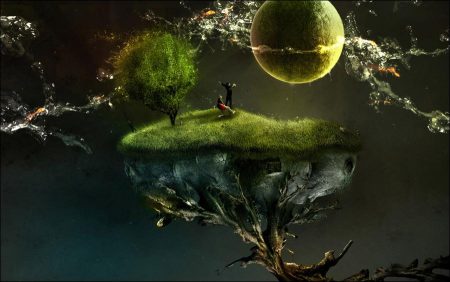The simplest multiverse is a consequence of the infinite size of our own Universe.
We do not actually know if the Universe is infinite, but we cannot rule it out. If it is, then it must be divided into a patchwork of regions that cannot see one another.
This is simply because the regions are too far apart for light to have crossed the distance. Our Universe is only 13.8 billion years old, so any regions further than 13.8 billion light years apart are utterly cut off.
To all intents and purposes, these regions are separate universes. But they will not stay that way: eventually light will cross the divide and the universes will merge.
If our Universe really does contain an infinite number of “island universes” like ours, with matter and stars and planets, there must be worlds identical to Earth somewhere out there.
It may sound incredibly unlikely that atoms should come together by chance into an exact replica of Earth, or a replica that is exact except for the colour of your socks. But in a genuine infinity of worlds, even that strange place must exist. In fact, it must exist countless times.
If so, then somewhere almost unimaginably far off, a being identical to me is typing out these words, and wondering if his editor is going to insist on radical revisions.
By the same logic, rather farther away there is an entire observable universe identical to ours. This distance can be estimated at about 10 to the power 10 to the power 118 metres. It is possible that this is not the case at all.
Maybe the Universe is not infinite. Or even if it is, maybe all the matter is concentrated in our corner of it, in which case most of the other universes could be empty. But there is no obvious reason why that should be, and no sign so far that matter gets sparser the farther away we look.
Next Page: The inflationary multiverse
Views: 393



